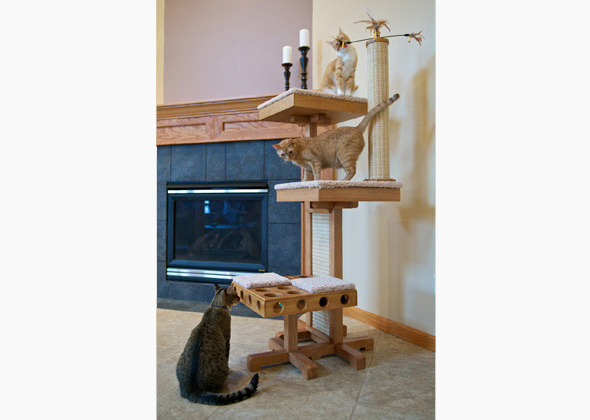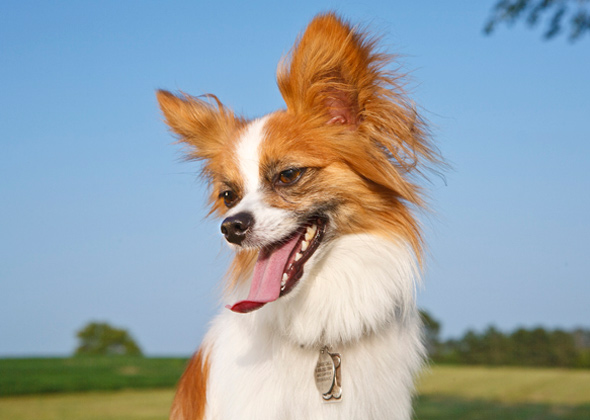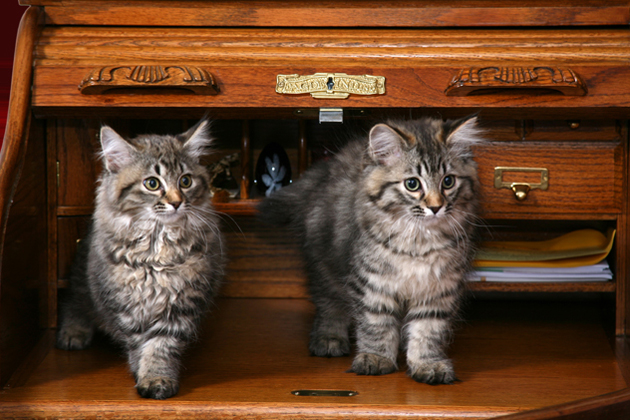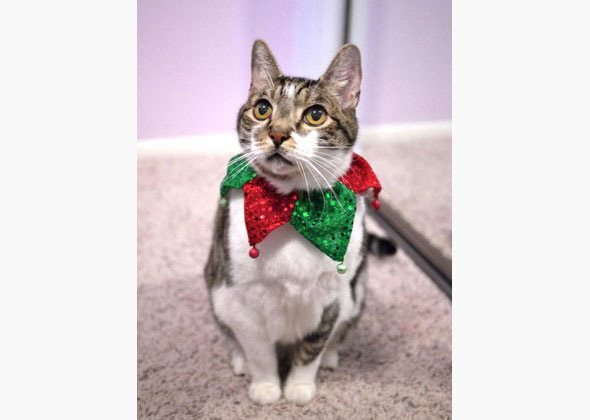Why Does My Cat… Arch Her Back?
Published on November 20, 2014
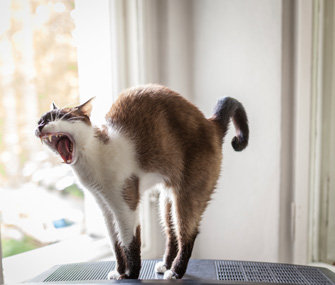
The cat’s back is very flexible, making it capable of curving it into a fairly tight arch, especially when compared with dogs. There are a number of reasons cats arch their backs, but here are the three main ones. First — and this is widely seen in many popular images in the fall — is that of the fear aggressor. In this classic Halloween pose, a cat arches his back and shows piloerection (i.e., his hair stands straight up) as a way of making himself look bigger when confronted with danger. When a cat looks like this, he is basically saying, “I’m scared of you but I’m ready to defend myself if you come any closer.” The cat may also make it clear that he’s ready to defend himself by doing things like growling, hissing, spitting and showing his teeth. If you encounter a cat giving this display, the best response is to slowly back away and give the cat his space. Cats also may arch their backs when playing. You can differentiate this more playful cat from the fear aggressor by the fact that he won’t be growling, hissing, spitting or showing his teeth. Instead, he is likely to engage in a variety of hopping and pouncing behaviors, which may be directed toward another cat, a toy or a person with whom the cat has a friendly relationship and feels comfortable. Finally, cats sometimes arch their backs as part of the process of stretching, just as we humans do — except they are far more flexible than we are. Very common feline positions include the head-and-chest-down-and-tail-up-in-the-air stretch, the hind-legs-stretched-backward-while-the-weight-is-mainly-supported-by-the-forelegs stretch, and the arch-the-back stretch. So your cat’s arched back could mean “Stay back!” “Come play with me?” or “Gee, that feels nice!” More on Vetstreet.com:

